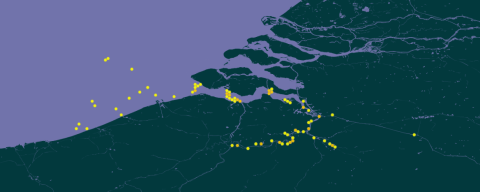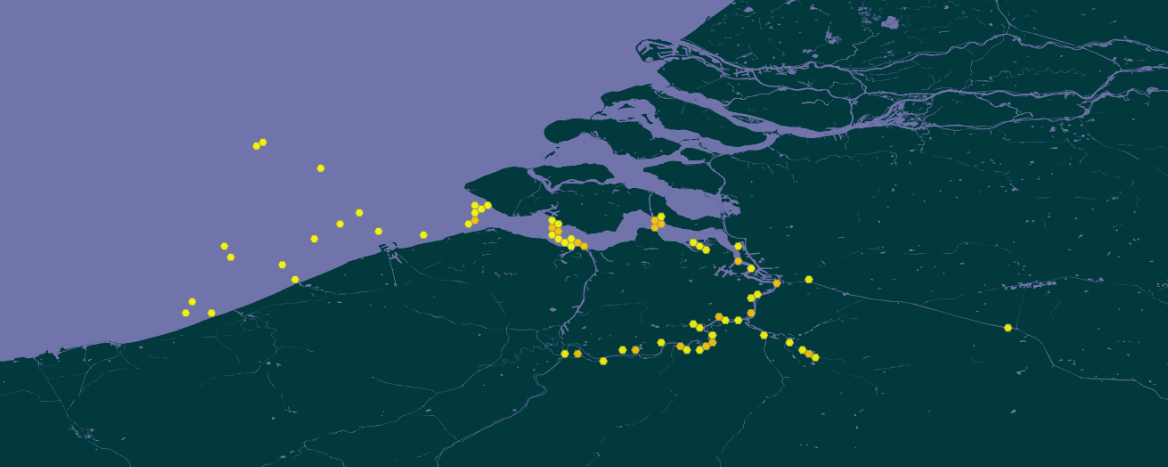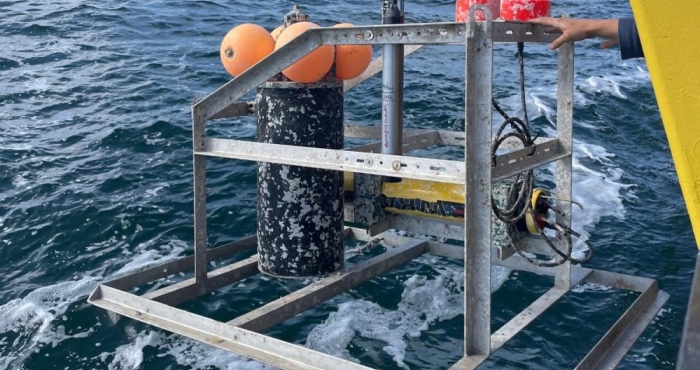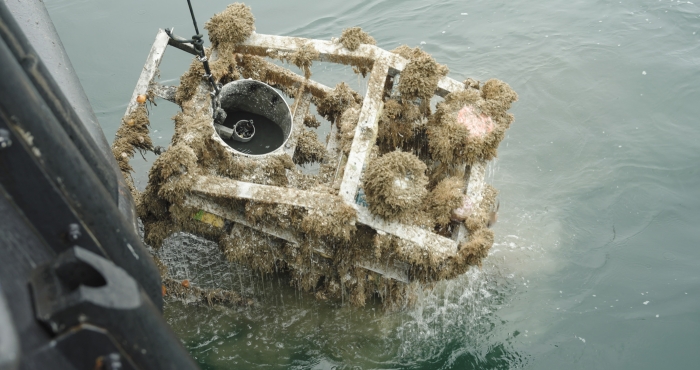First ETN datasets available through GBIF

Tracking data from the Permanent Belgian Acoustic Receiver Network, part of LifeWatch Flanders, are now available via the Global Biodiversity Information Facility (GBIF). The most commonly used method in this network is acoustic telemetry, which allows the active tracking of fish. This technique involves implanting tags that emit acoustic signals into the fish. These signals are then detected by a network of static receivers. When a signal is detected, the receiver logs the unique ID of the transmitter along with the precise time of the event.
Acoustic telemetry data are managed in the European Tracking Network (ETN) data platform. While raw versions of these datasets have been available via IMIS since 2020, the first eight datasets are now available in Darwin Core format through GBIF. These datasets were collected by INBO and Ghent University as part of their contribution to LifeWatch Flanders.
As a result, 507,095 occurrences of 10 fish species from Belgian freshwater, intertidal, and marine habitats are now discoverable through GBIF. The next step will be to make this data accessible via OBIS as well.

Spatial coverage of the 81.302 records in the ‘2015_PHD_VERHELST_EEL - Acoustic telemetry data for European eel (Anguilla anguilla) in the Scheldt estuary and southern North Sea (Belgium)’ dataset.



